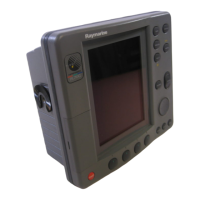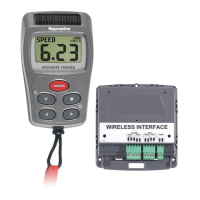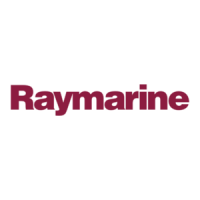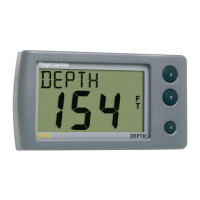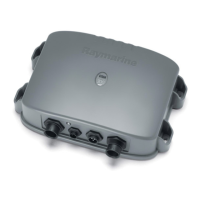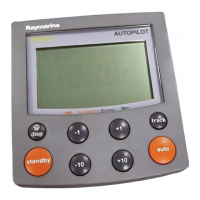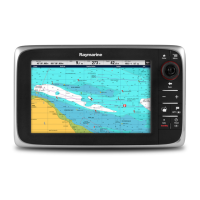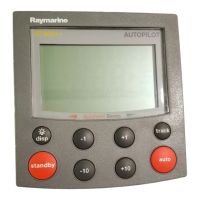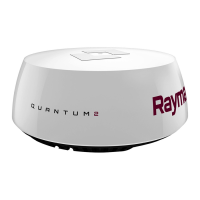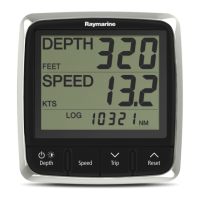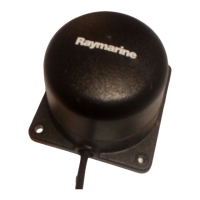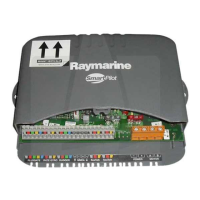Chapter 1: Overview 5
Display Unit Features
• Uses position information from GPS, dGPS or Loran-C technology
• Displays and transfers SeaTalk, NMEA and HSB data
• Provides full control of data from other HSB instruments
• Three full-screen operating modes: Radar, Chart, Data Log (if appropriate
data is available)
• View radar and chart simultaneously
• Half-screen windows to display additional data: Course Deviation Indicator
(CDI), Bearing and Distance Indicator (BDI), navigation data
• Cursor echo across SeaTalk, and between chart and radar windows
• Choice of orientation: Head Up, Course Up and North Up
• Chartplotter - Displays chart information from the C-MAP NT
®
chart cards
(C-Cards)
Operating Modes
If you have a combined Pathfinder Radar/Chartplotter Unit, or have both an
HSB Series Radar and Chartplotter connected, three full-screen modes are
available – chart, radar and data log – as shown in the following illustration; you
select the operating mode using the DISPLAY key as described in Chapter 2.
In addition, in chart or radar mode you can set Windows On to display
supplementary data as described below. Alternatively, on a combined radar/
chartplotter or repeat display, you can split the display into two half-screen
windows for radar and chart display.
The following information, if available on your system, can be shown:
Full-screen Mode Window Options
Radar Mode CDI, BDI, Chart or Nav Data
Chart Mode CDI, BDI, Radar or Nav Data
Data Log Mode Windows not available
Window Options
You can choose one of the following for display in the lower window:
• CDI: This gives the Course Deviation Indicator graphical display, with data
relating to the target waypoint.
• BDI: This gives the Bearing and Distance Indicator graphical display, with
data relating to the target waypoint.
• Chart display (when in Radar mode)
Radar display (when in Chart mode): If data is available, either as a
function of the combined display unit or via the HSB link, it can be
displayed.
Operating Modes
